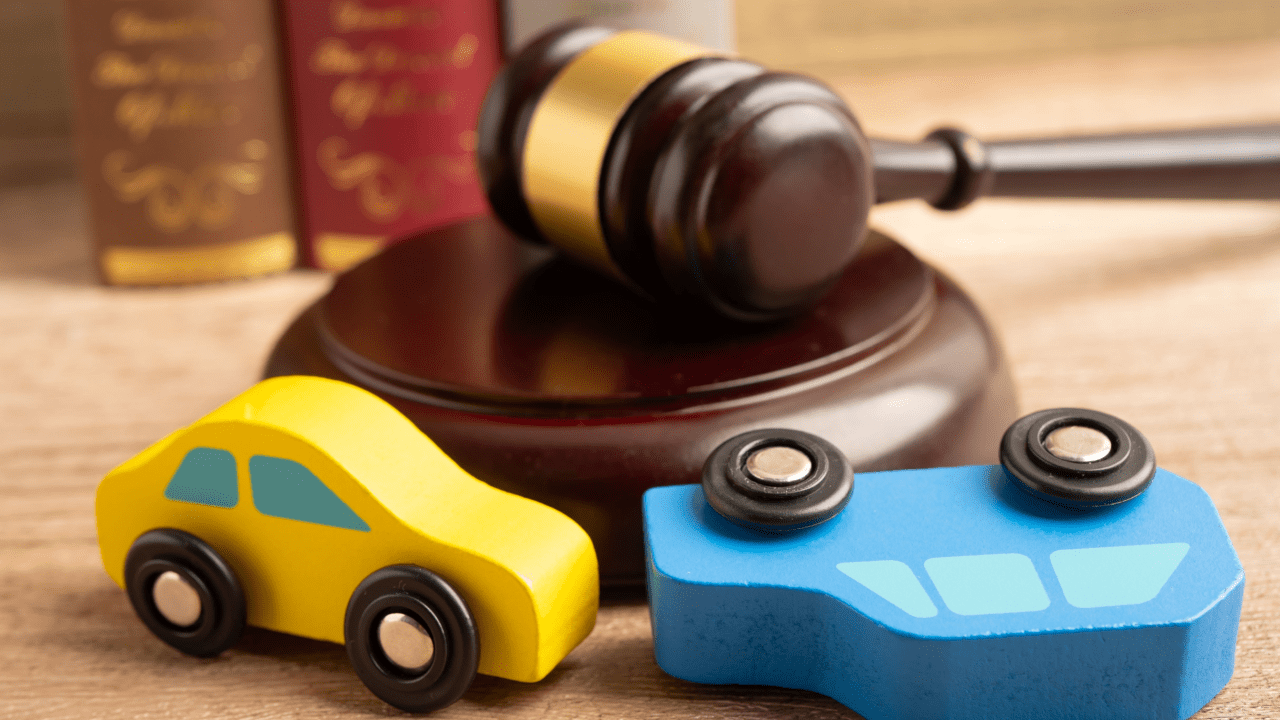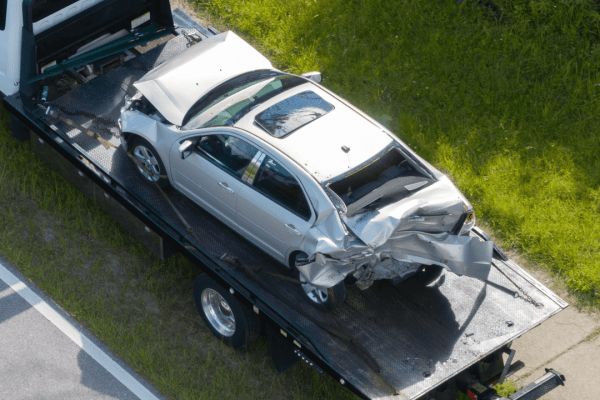
Winning Accident Lawsuits | Your Complete Guide to Legal Success
Winning Accident Lawsuits Explained
Winning accident lawsuits requires strategic planning, compelling evidence, and expert legal representation to secure maximum compensation. Whether you’ve suffered injuries in a car crash, slip-and-fall incident, or workplace accident, understanding the litigation process significantly improves your chances of a favorable outcome. This comprehensive guide reveals proven strategies that successful plaintiffs use to build winning cases and maximize their settlements.
Evidence Collection: Building Your Strongest Foundation
The foundation of any successful accident lawsuit rests on comprehensive evidence collection. Strong evidence transforms your case from a “he said, she said” dispute into a compelling narrative supported by facts. The quality and quantity of evidence you gather directly correlates to your case’s strength and potential settlement value.
Critical Evidence Timeline: First 48 Hours
Time is your most critical factor when preserving evidence. Accident scenes change rapidly—vehicles get repaired, surveillance footage gets overwritten, and witnesses’ memories fade. Within the first 48 hours, prioritize documenting the accident scene through photographs from multiple angles, capturing property damage, road conditions, traffic signals, and any visible injuries. Obtain contact information from all witnesses, as their accounts often prove invaluable when liability disputes arise.
Medical Records That Strengthen Your Case
Comprehensive medical documentation serves as the backbone of your injury claim. Seek immediate medical attention, even for seemingly minor injuries, as some conditions like soft tissue damage or concussions may not manifest symptoms immediately. Maintain detailed records of all medical treatments, follow-up appointments, and prescribed therapies. Consistency in medical care demonstrates the severity of your injuries and your commitment to recovery.
Digital Evidence and Technology Tools
Modern technology provides powerful evidence-gathering opportunities. Smartphone photos, dashcam footage, and social media posts can significantly impact your case. However, be cautious—digital evidence cuts both ways, and opposing counsel will scrutinize your online presence for contradictory information.
Essential Evidence Checklist:
- Accident scene photographs and videos
- Police reports and citation numbers
- Medical records and treatment documentation
- Witness contact information and statements
- Insurance correspondence and claim numbers
- Employment records showing lost wages
- Receipts for accident-related expenses
Strategic Planning: Choosing Settlement vs. Trial Routes
Strategic decision-making regarding settlement versus trial can determine the ultimate success of your accident lawsuit. Each path offers distinct advantages and risks that require careful evaluation based on your specific circumstances, injury severity, and financial needs.
Most personal injury cases—approximately 95%—settle out of court, often providing faster resolution and guaranteed compensation. However, the remaining 5% that proceed to trial sometimes achieve significantly higher awards, particularly in cases involving severe injuries or clear defendant negligence.
Settlement Negotiations: Pros and Cons
Settlement negotiations offer several compelling advantages, including predictable timelines, reduced legal costs, and guaranteed compensation without the uncertainty of jury verdicts. Settlements typically resolve within 6-18 months, allowing you to receive compensation and move forward with your life more quickly. Additionally, settlement agreements remain private, protecting your personal information from public scrutiny.
However, settlements also present notable disadvantages. Insurance companies often offer initial settlements significantly below fair value, hoping to resolve cases cheaply. Once you accept a settlement, you cannot pursue additional compensation if your injuries worsen or hidden damages emerge later.
Trial Preparation for Maximum Impact
Proceeding to trial becomes advantageous when settlement offers remain unreasonably low, particularly in cases involving permanent disabilities, significant disfigurement, or egregious defendant conduct. Trial preparation requires extensive documentation, expert witness testimony, and compelling presentation of your injuries’ impact on your daily life.
Settlement vs. Trial Comparison:
Factor | Settlement | Trial |
Timeline | 6-18 months | 2-4 years |
Costs | Lower legal fees | Higher litigation costs |
Outcome Certainty | Guaranteed amount | Uncertain jury verdict |
Compensation Range | Often lower | Potentially higher |
Privacy | Confidential | Public record |
Successful trial outcomes often require demonstrating clear liability, substantial damages, and the defendant’s ability to pay large judgments. Your attorney’s trial experience and track record become crucial factors in achieving favorable verdicts.
Common Mistakes: Avoiding Case-Killing Errors
Even strong accident cases can fail due to preventable mistakes that undermine credibility or reduce compensation value. Understanding these pitfalls helps you navigate the legal process while protecting your case’s integrity and maximizing your potential recovery.
Medical Treatment Red Flags
Delayed medical treatment raises questions about your injuries’ severity and connection to the accident. Insurance companies argue that waiting to seek treatment indicates minor injuries or alternative causes. Similarly, missing medical appointments or failing to follow prescribed treatment plans suggests your injuries aren’t as serious as claimed.
Documentation Best Practices
Inadequate documentation weakens even legitimate injury claims. Failing to maintain detailed records of medical treatments, lost wages, and accident-related expenses makes proving damages difficult. Additionally, accepting quick settlement offers without fully understanding your injuries’ long-term impact often results in inadequate compensation.
Top 7 Case-Damaging Mistakes:
- Posting on social media during litigation proceedings
- Delaying medical treatment after the accident
- Missing medical appointments or therapy sessions
- Failing to document expenses and lost income
- Giving recorded statements to insurance companies without attorney representation
- Accepting quick settlement offers before understanding full injury extent
- Ignoring medical advice or treatment recommendations
Real-World Example: A slip-and-fall plaintiff’s case value dropped from $150,000 to $35,000 after posting vacation photos showing physical activities that contradicted claimed back injury limitations. The opposing counsel successfully argued that the plaintiff’s injuries were less severe than claimed.
Avoiding these mistakes requires discipline and consistent communication with your legal team throughout the litigation process.
Calculating Current and Future Medical Costs
Economic damages include quantifiable financial losses such as medical bills, rehabilitation costs, and lost wages. Current medical expenses require comprehensive documentation of all accident-related treatments, from emergency room visits to ongoing physical therapy. Future medical costs often require expert medical testimony to establish the need for continued treatment, surgeries, or long-term care.
Pain and Suffering Valuation Methods
Non-economic damages—pain and suffering, emotional distress, and loss of life enjoyment—prove more challenging to calculate but often represent the largest portion of personal injury awards. Courts use various methods, including multiplier approaches (multiplying economic damages by 1.5 to 5) or per diem calculations (assigning daily values to pain and suffering).
Lost Income and Earning Capacity
Lost income calculations extend beyond immediate wage losses to include reduced earning capacity, lost benefits, and missed advancement opportunities. For severe injuries affecting your ability to work, economic experts analyze your career trajectory, education, and industry trends to project lifetime earning losses.
Damage Categories Breakdown:
Economic Damages (Quantifiable):
- Medical expenses (past and future)
- Lost wages and benefits
- Rehabilitation and therapy costs
- Medical equipment and modifications
- Transportation to medical appointments
Non-Economic Damages (Subjective):
- Pain and suffering
- Emotional distress
- Loss of life enjoyment
- Disfigurement or scarring
- Loss of consortium (family relationships)
Punitive Damages (Exceptional Cases):
- Awarded for egregious defendant conduct
- Designed to punish and deter similar behavior
- Typically require proof of intentional wrongdoing or gross negligence
Life care plans become essential for catastrophic injuries, providing detailed roadmaps of future medical needs and associated costs. These comprehensive analyses often justify multi-million-dollar settlements by demonstrating the true financial impact of severe injuries over a plaintiff’s lifetime.
Expert Representation: Selecting Your Legal Team
Choosing the right attorney often determines the difference between a successful lawsuit and a disappointing outcome. Personal injury law requires specialized knowledge, negotiation skills, and litigation experience that general practice attorneys may lack. Your legal team becomes your advocate, strategist, and guide through the complex litigation process.
Attorney Vetting Checklist
When evaluating potential attorneys, prioritize those with extensive personal injury experience and a proven track record in cases similar to yours. Look for attorneys who specialize in accident law rather than general practitioners, as specialization brings deeper knowledge of insurance company tactics, medical expert networks, and case valuation methods.
Board certifications in personal injury law, membership in trial lawyer associations, and recognition from peer organizations indicate professional competence. Additionally, verify that the attorney has trial experience—insurance companies settle more favorably with attorneys known for taking cases to court when necessary.
Understanding Fee Structures
Most personal injury attorneys work on contingency fee arrangements, meaning they receive payment only if you win your case. Standard contingency fees range from 33% to 40% of your settlement or award, with higher percentages if the case proceeds to trial. This arrangement aligns your attorney’s interests with yours—they’re motivated to maximize your recovery.
However, clarify additional costs such as expert witness fees, court filing expenses, and investigation costs. Some attorneys advance these costs, while others require clients to pay them regardless of case outcome.
Attorney Evaluation Scorecard:
Experience & Credentials (25 points possible):
- Years practicing personal injury law (5 points)
- Board certification in personal injury (5 points)
- Trial experience and verdicts (10 points)
- Professional awards and recognition (5 points)
Case Management & Communication (25 points possible):
- Responsiveness to initial consultation (10 points)
- Clear explanation of legal process (10 points)
- Availability and communication frequency (5 points)
Red flags to avoid include attorneys who guarantee specific outcomes, request upfront fees for contingency cases, or pressure you to sign immediately without adequate review time.
Timeline Expectations: Navigating the Legal Process
Understanding realistic timelines helps you plan financially and emotionally for the litigation process. Accident lawsuits typically resolve within 18 months to 3 years, depending on injury severity, liability complexity, and whether the case settles or proceeds to trial. The Department of Transportation (DOT) provides regulatory information that may be relevant to transportation-related accident cases.
Case Timeline Milestones
The litigation process follows predictable phases, beginning with investigation and medical treatment completion. Initial case evaluation and attorney retention usually occur within the first few months after your accident. Your attorney then conducts thorough investigation, gathering evidence and medical records while you focus on recovery.
Once you reach maximum medical improvement—the point where further recovery is unlikely—your attorney can accurately assess damages and begin settlement negotiations. This phase typically occurs 6-12 months post-accident for minor injuries, but may extend 18-24 months for serious injuries requiring extensive treatment.
Statute of Limitations by Accident Type
Time limits for filing lawsuits vary by state and accident type. Most states allow 2-3 years for personal injury claims, but some jurisdictions impose shorter deadlines. Government entity claims often require notice within 30-180 days, with filing deadlines as short as one year.
Typical Timeline Milestones:
- Months 1-3: Medical treatment begins, attorney retention, initial investigation
- Months 6-18: Maximum medical improvement, damage assessment
- Months 12-24: Settlement negotiations, potential lawsuit filing
- Months 18-36: Discovery phase, mediation, trial preparation
- Months 24-48: Trial or final settlement resolution
State Statute of Limitations Examples:
- California: 2 years for personal injury
- Texas: 2 years for most accident claims
- Florida: 4 years for personal injury (reduced to 2 years in 2023)
- New York: 3 years for personal injury
Factors that accelerate resolution include clear liability, cooperative insurance companies, and straightforward injuries. Delays often result from disputed liability, multiple defendants, complex medical issues, or uncooperative insurance carriers.
Final Verdict: Your Path to Winning Accident Lawsuits
Success in accident litigation requires combining strong evidence, strategic planning, expert legal representation, and patience throughout the process. The most successful plaintiffs understand that winning extends beyond monetary recovery—it includes obtaining justice, accountability, and resources for complete rehabilitation.
Long-term case preparation benefits extend beyond your lawsuit’s resolution. Comprehensive medical documentation supports future disability claims, proper legal resolution provides closure, and adequate compensation enables complete rehabilitation and financial security.
Your Action Plan for Legal Success:
- Immediate (First 48 Hours): Document accident scene, seek medical attention, preserve evidence
- Short-term (First Month): Consult experienced personal injury attorney, continue medical treatment
- Medium-term (3-6 Months): Complete medical treatment, gather all documentation, begin case evaluation
- Long-term (6+ Months): Pursue settlement negotiations or litigation with attorney guidance
Remember that every accident case is unique, requiring personalized strategies based on your specific circumstances, injuries, and goals. The path to winning accident lawsuits begins with your first proactive step toward protecting your rights and securing the compensation you deserve.
Take Action: Start Your Winning Strategy Today
Professional legal guidance proves invaluable in navigating insurance company tactics, understanding complex legal procedures, and maximizing recovery value. Experienced personal injury attorneys bring negotiation skills, medical expert networks, and trial experience that significantly impact case outcomes.
Don’t let insurance companies minimize your claim. Contact our experienced accident attorneys for a free case evaluation and learn how we can help you build a winning strategy. Our proven track record in winning accident lawsuits means maximum compensation for your injuries and losses.
Frequently Asked Questions
1. What percentage of accident lawsuits are successful?
Studies show that approximately 90-95% of personal injury cases settle out of court, with plaintiffs receiving compensation in the majority of filed claims. Cases that proceed to trial have lower success rates but often yield higher compensation amounts when successful.
2. How long does it take to win an accident lawsuit?
Most accident lawsuits resolve within 6-18 months through settlement negotiations. Cases that proceed to trial typically take 2-4 years to reach final resolution, depending on court schedules and case complexity.
3. What evidence is most important for winning accident lawsuits?
Medical documentation, photographic evidence from the accident scene, witness statements, and expert testimony are the most critical evidence types. Immediate medical treatment and consistent follow-up care significantly strengthen your case.
4. Can I still win if I was partially at fault for the accident?
Yes, many states follow comparative negligence laws that allow you to recover damages even if you were partially responsible. Your compensation will be reduced by your percentage of fault, but you can still pursue a successful claim.
5. Should I accept the first settlement offer from insurance companies?
No, initial settlement offers are typically much lower than your case’s true value. Insurance companies expect negotiation and often increase offers significantly during the settlement process.
Key Takeaways
- Evidence First: Immediate documentation and medical treatment create the foundation for winning accident lawsuits
- Legal Expertise: Experienced attorneys increase settlement values by an average of 3.5 times compared to self-representation
- Strategic Timing: Acting quickly preserves evidence and meets legal deadlines while maximizing case strength
- Damage Documentation: Comprehensive medical records and economic loss calculations ensure full compensation recovery
- Negotiation Power: Understanding your case value and settlement alternatives provides leverage against insurance companies



